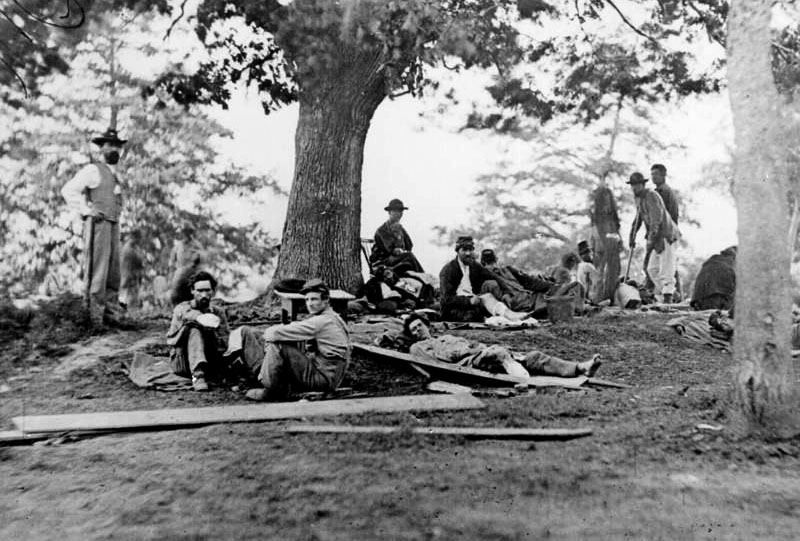By John Matthews
The recently-released Coronavirus vaccine is being hailed as nothing short of a medical miracle due to the speed of its development. In less than one year since the discovery of the complex and fast-spreading virus, scientists have completed a vaccine with an efficacy rate over 90%. This rapid development is unprecedented in the realm of medical research. Most scientific discoveries take longer – in one case, 139 years longer.
In April of 1862, a significant battle was fought just a few hours east of Memphis, Tennessee. The Battle of Pittsburg Landing—better known as Shiloh—was a mighty clash between the North and South, led by Commanding Union General Ulysses S. Grant and Confederate General Albert Sydney Johnson. The Battle of Shiloh was a lethal melee involving over 80,000 men, and generating a wholesale slaughter previously unimaginable in the United States. The casualties from this single battle exceeded those from the young nation’s three previous wars – combined.
With over 20,000 total wounded, neither army was sufficiently equipped to quickly remove men from the battlefield and triage by wound severity. Most of the injured went unattended for the extent of the two-day battle; some even waited several days beyond the cessation of combat to receive medical attention. In the midst of this horror, soldiers and battlefield medical staff alike observed a strange, previously-unseen phenomenon: at night, an eerie, blue-green aura was seen emanating from the exposed wounds of many fallen soldiers. Furthermore, doctors began to notice that the men whose wounds exhibited this strange luminosity tended to have an increased chance of survival, undergoing a remarkably faster healing process than those left unaffected. At a time when most battle deaths were the result of infection of a wound rather than of the wound itself, this was nothing short of a miracle. For this reason, the condition was given the moniker “Angel’s Glow.”
There exists no other record of Angel’s Glow in subsequent Civil War battle history. Despite numerous soldiers’ letters home describing the mysterious glow, the strange phenomenon was forgotten over time, consigned to the annals of history as nothing more than a legend that grew out of overactive imaginations trapped in the fog of war. That is, until a 17-year old Civil War enthusiast named Bill Martin visited Shiloh National Battlefield Park in 2001 and found himself interested in the unexplainable Angel’s Glow. Martin did something that no other historian, researcher, or scientist had done in the past 139 years: he asked his mother if it could be true. Could it be the result of some type of unknown, yet beneficial bacteria?
His mother, Phyllis Martin—who just so happened to be a microbiologist with the USDA—was studying the properties of certain luminescent bacteria at the time. She suggested to her son that he conduct an experiment that would test his hypothesis that Angel’s Glow was a naturally occurring process of some type of bacteria present in the area. With the help of his high school friend, Jon Curtis, Bill Martin set out to do exactly that.
As it turns out, the muddy terrain of West Tennessee is rife with a type of parasitic worm called the Nematode. Within the digestive tract of these worms lives a particular species of luminous bacterium called Photorhabdus luminescens (P. luminescens). As the Nematode feeds on its host organism, it habitually vomits up its stomach contents—including trace amounts of the glow-in-the-dark P. luminescens bacteria.

The two boys were subsequently able to prove that, far from being harmful to the human body, P. luminescens naturally kills off many of the harmful bacteria that cause wound infections and slow the body’s naturally healing process. The medical community in 1862 could have never comprehended this, as the positive effects of certain bacteria would not be uncovered for many decades – until penicillin was developed in 1928.
Now, nematodes do not usually find hosts in human bodies, since our natural temperature is too warm for them to survive. So how did they end up in the soldiers at Shiloh? Martin and Curtis quickly developed a theory for this, which has become largely accepted among the historical and scientific community. They noted that the wounded and unattended soldiers spent the nights of April 4th and 5th exposed to the chilly night air and cold spring rain. As such, many of them likely experienced hypothermia, effectively lowering their body temperatures to a point conducive to nematode life.
Bill Martin and Jon Curtis presented their hypotheses and findings at the International Science and Engineering Fair in San Jose, California later that year, where they placed first in team competition, having solved a 139-year-old puzzle! I don’t know where Bill and Jon are today but I would put money on the bet that one, or both, of them is working away in the laboratories of Pfizer or Moderna, leading the field in coronavirus vaccine research – and, of course, checking in with mom from time to time.
Adapted from John Matthews’ collection of essays: WHITE GOLD, YELLOW FEVER AND RED HOT BLUES, Uncommon Denominators of America’s Coolest City. Read more of John’s Uncommon Denominators here on StoryBoard.

